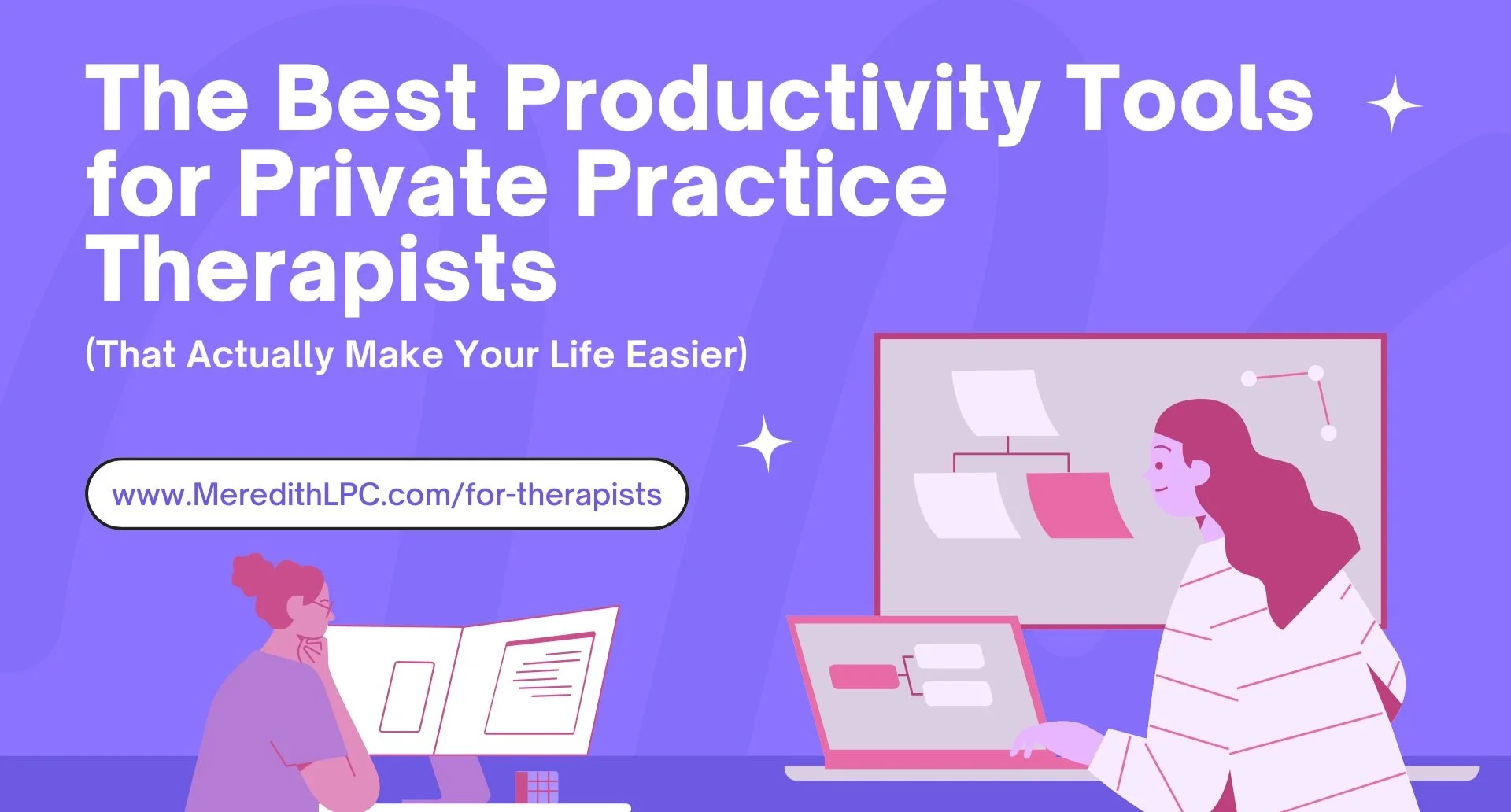Why Your Private Practice Needs a Website (and What to Put on It)
If you’re a therapist in private practice—or dreaming of becoming one—you’ve probably heard that you should have a website. But between client sessions, paperwork, and life, it’s easy to push this task to the bottom of the list. You might be thinking, “I’m on Psychology Today, isn’t that enough?” Or maybe the idea of building a website feels too overwhelming or expensive.
Here’s the truth: your website is one of the most valuable assets you can invest in as a business owner.
Let’s talk about why your private practice needs a website—and exactly what should be on it to help you attract more of the clients (or referrals) you want.
Why You Need a Website in Private Practice
1. It Builds Trust and Credibility
When potential clients hear about you—whether from a friend, insurance list, or therapist directory—the first thing many will do is Google your name. A website gives them a place to land that’s polished, professional, and curated by you.
Even if someone finds you on Psychology Today or a social media platform, your website serves as your home base. It reinforces your expertise, helps people feel safe choosing you, and makes you stand out from the crowd.
2. It Attracts the Right Clients
A great website helps filter in the kind of clients you want to work with. When you clearly communicate your niche, therapy style, and values, you draw in people who resonate with your approach—and weed out those who aren’t a good fit. That means fewer no-shows, better outcomes, and a caseload that feels aligned.
3. It Works for You 24/7
Your website is like an assistant who never sleeps. It can answer FAQs, share your availability, and allow people to contact or book with you—while you’re off the clock. That kind of accessibility is key in today’s on-demand culture.
4. It Grows With You
Whether you want to stay solo, add clinicians, launch courses, or offer consulting (like I do!), your website gives you a place to expand. Think of it as your practice’s digital storefront that evolves alongside your business goals.
What to Put on Your Private Practice Website
A solid therapy website doesn’t have to be flashy—but it does need to be functional. Here’s what you should include:
1. Home Page
This is your welcome mat. It should clearly say:
Who you help
What you help with
What makes your approach unique
Use warm, engaging language that speaks directly to your ideal client’s struggles and goals.
2. About Page
This is one of the most visited pages on therapy websites. Clients want to know who you are, what you believe, and why you do this work. Share your credentials, of course—but also include a bit of your personality. You can even sprinkle in fun facts or a photo of your dog if it feels authentic.
Pro tip: Write it in first person to help clients feel more connected.
3. Services Page
List the types of therapy you offer, who you work with, and your areas of specialty. Keep it organized and scannable. If you offer different services (individual therapy, couples, EMDR, etc.), consider separate subpages or sections.
4. FAQs
Answer common questions like:
Do you take insurance?
How much do sessions cost?
What can I expect in the first session?
What’s your cancellation policy?
This reduces the back-and-forth in emails and gives people confidence to reach out.
5. Contact Page
Make it easy for people to get in touch! Include a secure contact form, email address, phone number (if applicable), and links to your client portal or booking system.
Bonus: Include your service area or licensure states for SEO. Example: “Offering teletherapy across Georgia and Florida.”
6. Blog (Optional but Powerful)
Blog posts can boost your SEO, educate your audience, and position you as an expert. Plus, they give potential clients a taste of your voice and insight. Not sure what to write about? Start with questions your clients often ask.
Don’t Forget: SEO Basics
A beautiful website won’t help much if no one sees it. To boost your visibility on Google, make sure you:
Include keywords like “anxiety therapist in Atlanta” or “EMDR therapy for trauma in Georgia”
Add alt text to images
Use headers (H1, H2) to organize content
Ensure your site loads quickly and works on mobile
If SEO overwhelms you, you’re not alone—I help many therapists navigate this in my private practice consultations.
Final Thoughts
Your website doesn’t have to be perfect. It just needs to be present, professional, and client-centered. Whether you DIY it or outsource it, having a website is a non-negotiable step toward building a sustainable, thriving private practice.
Need help figuring out what to include or how to get started? I offer 1:1 consultations to help therapists build a private practice that fits their lifestyle and values—from systems to marketing and beyond.
Want personalized support to launch or revamp your private practice website? Book a consultation with me today.
Related Articles: "Wait, What’s SEO?" A Beginner’s Guide to Marketing Yourself as a Therapist Online
Best Free (and Low-Cost) Marketing Strategies for Private Practice
How to Write a Therapist Directory Listing That Stands Out (And Actually Gets You Clients)


